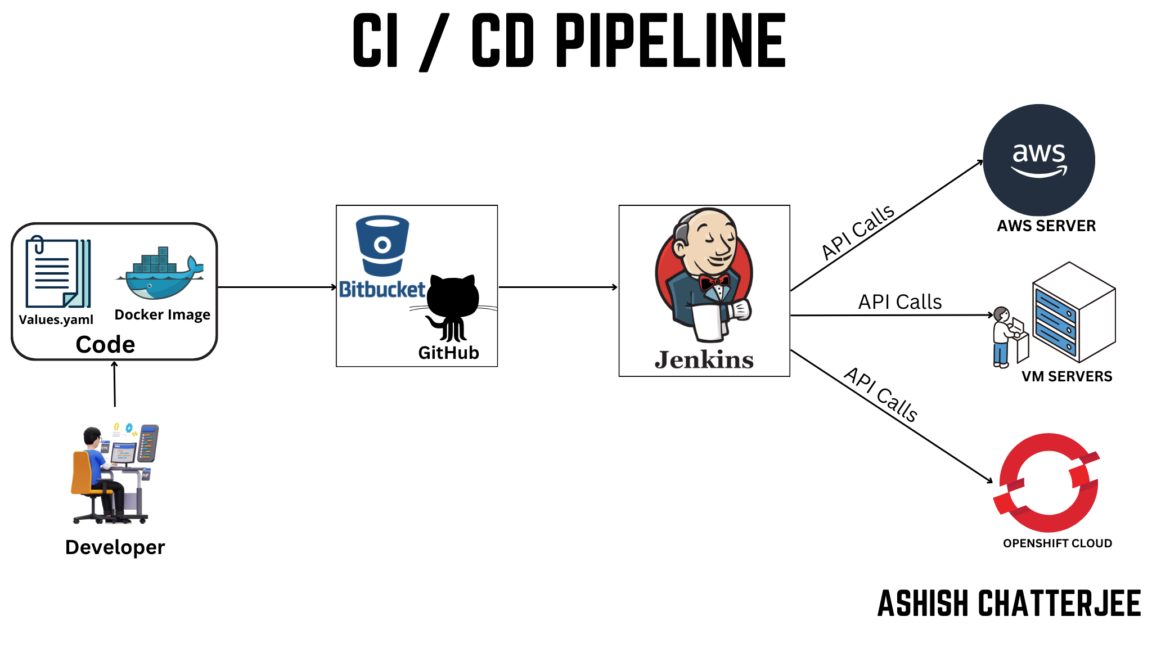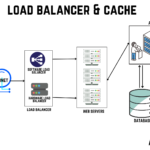Understanding the CI/CD Pipeline in DevOps
A Continuous Integration and Continuous Deployment (CI/CD) pipeline automates the process of integrating code, building applications, testing, and deploying to various environments. This ensures faster delivery of high-quality software. Here’s a breakdown of the pipeline depicted in the image:
1. Developer Stage: Writing Code
- Role: The developer writes and commits code changes, including configuration files like
values.yaml(often used in Kubernetes Helm charts). - Key Artifacts:
- Codebase: Application source code.
- Values.yaml: Configurations for deploying applications.
- Docker Image: A containerized version of the application, built using a
Dockerfile.
2. Version Control: Bitbucket
- Purpose: Bitbucket acts as the repository for source code and configuration files.
- Process:
- Developers push their code changes to Bitbucket.
- Bitbucket integrates with Jenkins to trigger automated build jobs.
3. Build and Test Automation: Jenkins
- Role: Jenkins orchestrates the CI process, building and testing the application.
- Steps:
- Code Integration: Jenkins pulls the latest code from Bitbucket.
- Build Process: Jenkins builds Docker images using the provided
Dockerfile. - Testing: Jenkins runs automated tests to ensure the code quality and functionality.
- Artifact Storage: The built Docker image is stored in a container registry for deployment.
4. Deployment Stage: API Calls
Jenkins triggers deployment processes via API calls to different environments, ensuring Continuous Delivery (CD). These environments can include:

- AWS Servers:
- Applications are deployed to AWS EC2 instances or managed Kubernetes clusters using APIs.
- VM Servers:
- Jenkins deploys code directly to virtual machines for on-premise environments.
- OpenShift Cloud:
- Kubernetes-based applications are deployed to OpenShift environments using configuration files (like
values.yaml) for managing resources.
- Kubernetes-based applications are deployed to OpenShift environments using configuration files (like
Key Features of This CI/CD Pipeline
- Automation: All stages from code integration to deployment are automated, reducing manual effort and errors.
- Consistency: Automated tests ensure consistent builds before deployment.
- Scalability: Supports deployment to multiple environments, including cloud (AWS, OpenShift) and on-premise (VM Servers).
- Traceability: Every step, from the code repository to deployment, is logged for accountability.
This pipeline exemplifies a modern CI/CD setup that integrates code from developers, builds and tests it, and deploys it seamlessly to various environments using tools like Jenkins, Bitbucket, and Docker. It enables faster, reliable, and efficient software delivery.






GIPHY App Key not set. Please check settings